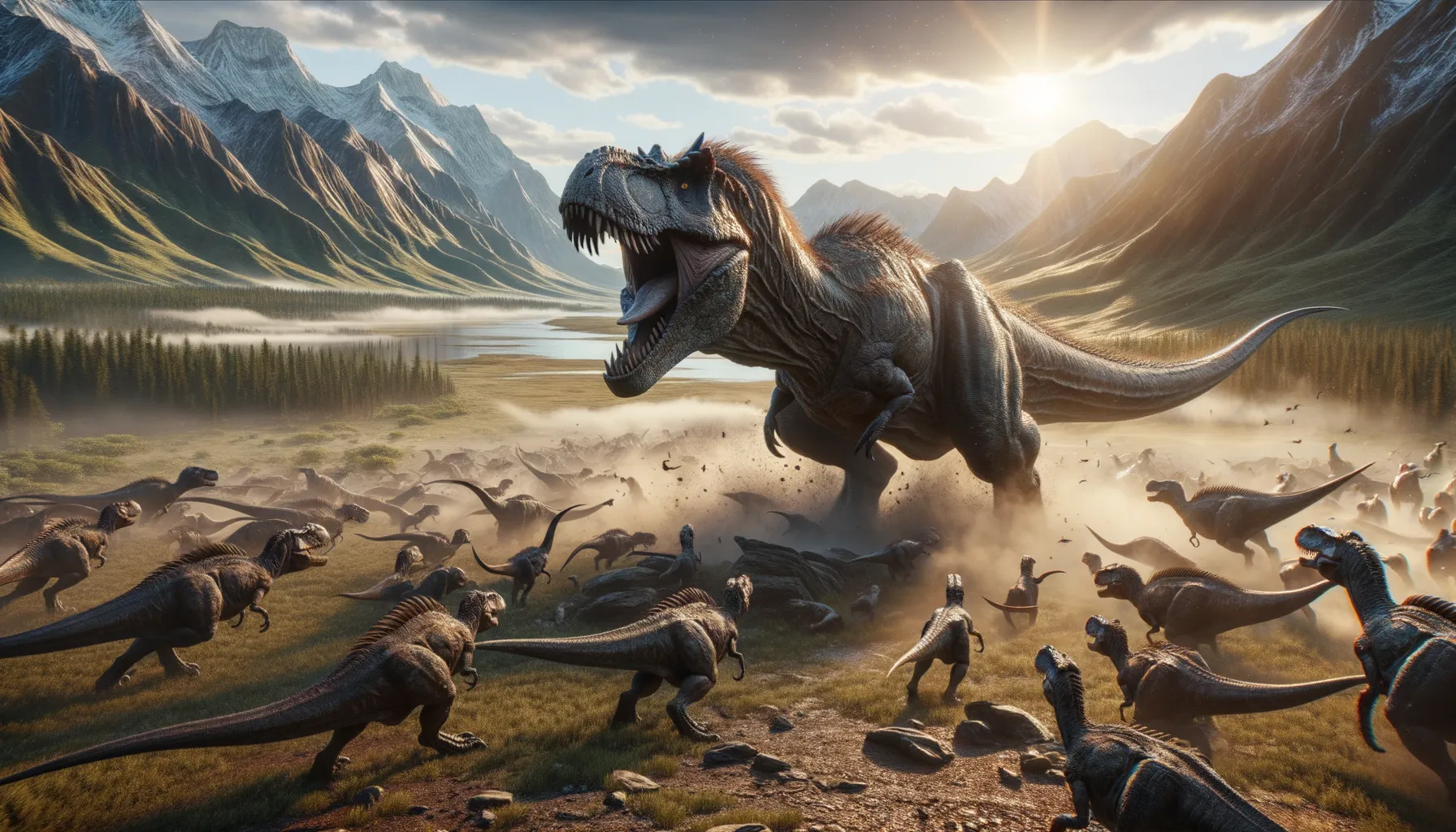
Achillobator
Fierce predator with a sleek, agile build.
Period
Cretaceous
Length
Roughly 20 feet long.
Height
Approximately 6 feet tall.
Weight
Around 300 kilograms.
Achillobator was a large, swift predator that roamed the lands of what is now Mongolia during the late Cretaceous period. Known for its formidable claws and agile build, it likely preyed on other dinosaurs in its ecosystem. Its discovery added valuable insight into the diversity and behavior of dromaeosaurids, a group of predatory theropods. As a member of this group, it shared similar characteristics with the infamous Velociraptor, albeit on a larger scale.
Diet
Achillobator was a carnivore, feeding on smaller dinosaurs and possibly scavenging carrion when opportunities arose. Its sharp claws and teeth were well-suited for capturing and dismembering prey.
Hunting
This dinosaur likely employed ambush tactics, using its speed and claws to capture unsuspecting prey. It may have hunted in packs, allowing it to tackle larger animals and ensure a successful hunt.
Environmental challenges
Achillobator faced environmental challenges such as fluctuating climate conditions during the Cretaceous period. Competition with other carnivorous dinosaurs also posed a significant challenge, as resources like food and territory were limited. Adaptation to diverse habitats helped it survive in a changing environment.
Speed
Likely swift due to its agile build.
Lifespan
Estimated to be around 25 to 30 years.
First discovery
First unearthed in Mongolia in the late 20th century.
Fun Facts
- Achillobator was a large, fast-moving dinosaur that lived around 90 million years ago during the Late Cretaceous period.
- The name 'Achillobator' means 'Achilles warrior,' inspired by its strong leg muscles similar to the mythical Greek hero Achilles.
- This dinosaur was about 20 feet long and weighed approximately 1,000 pounds, making it one of the bigger dromaeosaurs.
- Achillobator had a large sickle-shaped claw on each of its feet, which it likely used for hunting and defense.
- Fossils of Achillobator were first discovered in Mongolia in the 1980s, highlighting its existence in areas that were once part of a vast inland sea.
- The discovery of Achillobator helped paleontologists understand more about the diversity and evolution of predatory dinosaurs in Asia.
- Achillobator shares some similarities with its more famous cousin, Velociraptor, but was significantly larger in size.
Growth and Development
Achillobator likely hatched from eggs and grew rapidly during the first few years of life. It reached full maturity in approximately a decade, at which point it would begin hunting larger prey. As it grew, its physical characteristics such as claws and teeth became more pronounced, aiding in its predatory lifestyle.
Habitat
Achillobator inhabited varied terrains including forests and open plains, indicating its adaptability. These regions provided ample prey and shelter, crucial for its survival. Access to water sources was another key factor, as it likely aided in sustaining prey populations within its territory.
Interaction with other species
Achillobator likely competed with other large carnivores for resources. This competition may have driven evolutionary adaptations, such as developing more effective hunting strategies or territorial behaviors. It might have also encountered herbivorous species, which it actively hunted.
Natural lifespan
Naturally lived for about 25 to 30 years.
Reproduction
Achillobator reproduced by laying eggs, likely in nests that provided protection and warmth. Parental care might have been involved to some extent, ensuring that the offspring survived the vulnerable stages after hatching.
Social behaviour
This dinosaur may have exhibited some social behavior, possibly hunting in packs or forming loose-knit groups for mutual protection. Such behavior would have been advantageous in competing with other predators and securing food.
Fossil locations
Achillobator fossils have primarily been found in Mongolia, within the varied rock formations that date back to the Late Cretaceous period. The discovery of these fossils has provided insight into the diversity and distribution of theropod dinosaurs in Asia.
